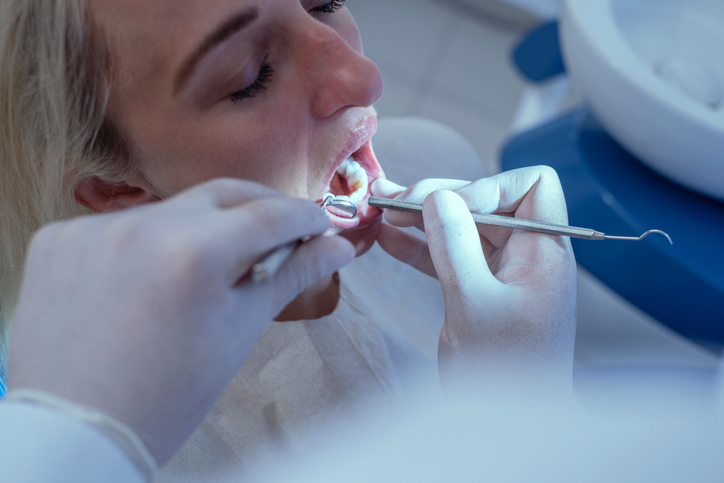While the ACT has the nation’s equal-lowest rates of decayed, missing, and filled teeth (DMFT) per adult, one in three residents has untreated tooth decay, a new study has found.
Released by Localsearch, a local business marketing website, the study analysed data from the Australian Institute of Health and Welfare (AIHW) to find out which states and territories in Australia have the best and worst overall dental health among adults.
The research revealed that the ACT ranks fourth after scoring 52 out of 100. DMFT figures are the lowest in the country at 9.7 per adult, matching the NT, Australia’s healthiest region.
The average number of DMFTs per adult shrunk by just under 12 per cent over 10 years, though there is a glaring difference between age groups: 35-54s improved most, with figures decreasing by 33 per cent, whereas 15-34s increased by 27 per cent.
The percentage of people with untreated decay in the ACT is third-highest in Australia, with a staggering 78 per cent increase from 18.7 per cent (fewer than one in five) to 33.3 per cent (one in three) over 10 years.
NT leaps from worst to best
The NT is healthiest after scoring 78 out of 100, the highest in the country. The NT experienced the lowest rate of decayed, missing, and filled teeth (DMFT) and the second-lowest and most-improved rates of untreated decay. It remarkably leaped from worst to best over a ten-year period.
In 2006-08, the NT recorded the highest percentage of untreated decay among all age groups. By 2017-18, that figure fell by almost 30 per cent, the biggest change nationwide. Northern Territorians over 55s, in particular, experienced the largest national improvement compared to any other age group; once the worst in the nation at 34 per cent, they are now lowest after more than halving to 16 per cent.
However, there is room to improve, with the NT having the second least-improved DMFT rates. Among individuals aged 15-34, rates are the highest in Australia, at 5.2 per person.
Other states
Queensland ranks second among the healthiest regions, with a score of 65. Queensland has the lowest proportion of its population with untreated decay and the second-most-improved rates over 10 years, with cases dropping from almost three in 10 (28 per cent) to almost four in 10 (23 per cent). On the other hand, the average number of DMFT is the third highest nationally at 11.6 per person, after an 11 per cent improvement over 10 years.
Victoria has the third-healthiest teeth in Australia, scoring 60 out of 100. Residents have the third-lowest rates of DMFTs per person at 10.8, down 16 per cent from 12.8 ten years ago, the second-largest improvement in the country, behind WA. Victoria’s lowest scores came from the percentage of people with untreated decay at almost one in three (32 per cent), the fourth-highest nationally. Rates worsened by 35 per cent over 10 years, the fourth-fastest decline.
SA ranks among the least healthy, fifth out of eight jurisdictions, with a score of 43. SA has the third-lowest rates of untreated decay, which slightly improved over 10 years when most states experienced a decline. However, its scores for DMFTs are among the worst nationwide, ranking seventh behind the least healthy, Tasmania. While this figure has somewhat improved over time, it is the lowest change compared to all states and territories.
NSW ranks third among the least healthy states, receiving a 38 out of 100 score. DMFTs per person are fourth-highest in the country, and the percentage of adults with untreated decay is second-highest at over one third (36 per cent). Its rate of change over time is average compared to other regions, with the number of DMFTs improving slightly and the proportion of people with untreated decay rising by a third.
WA, with a score of 36 out of 100, ranks among the poorest dental health in the nation. While the state experienced the biggest transformation regarding DMFTs, falling to 11 from 13.1 per person over 10 years, it has the highest percentage of residents with tooth decay, affecting almost four in 10 (39.5 per cent). WA experienced the most rapid decline, where rates doubled from 19.6 per cent 10 years prior. Tooth decay among 15-34s saw the single largest increase of any age group or jurisdiction, with the percentage tripling from 13.3 per cent to almost 40 per cent in 10 years. Rates among 55+s also jumped by over double from 13.9 per cent to 37.2 per cent.
Tasmania has the worst oral health in the nation, scoring only 32 out of 100. Locals have the most DMFTs at 12 per adult, the third-slowest improvement over 10 years. However, Tasmania scores average regarding the portion of its population with decay, just under 32 per cent, the fourth-lowest of the eight states. However, the figure has worsened from 22.4 per cent over 10 years, the third largest negative growth.
Commenting on the findings, Daniel Stoten, Localsearch Executive Chairman, said, “Data analysis shows that oral health among Australians has largely declined over the ten-year period, with five of eight regions experiencing much higher rates of tooth decay among its population. DMFT numbers fell across the country but are outweighed by the skyrocketing rates of people going without treatment for tooth decay. Poor oral health leads to pain, discomfort, and low self-esteem, so it’s important that people schedule regular check-ups to maintain their dental health.”



